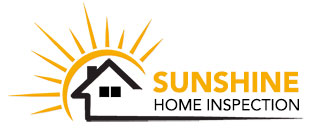My Own Eyes Work Better But Infrared Helps
As a home inspector, I’ve learned that you can’t always trust what you see on the surface. While my eyes and experience are my most valuable tools, sometimes technology can give me a helping hand. A professional home inspection with the right equipment can reveal hidden issues, and an infrared camera is one of those tools that, while not a miracle worker, can prove to be an asset…somewhat.
Why a Standard Home Inspection Isn’t Always Enough
When I perform a property inspection, I’m already on the lookout for signs of water intrusion. These can be obvious indicators like bubbling paint, discolored walls or mold. I’ll use my moisture meter to confirm these suspicions, which gives me a precise reading of the relative humidity levels in the material. I’d estimate that I find some form of water damage on about half of my inspections in the New Orleans area. These leaks can come from various sources: a leaky roof, faulty windows, or issues with a home’s foundation or siding.
But what about the problems that aren’t so easy to spot? This is where an infrared camera can help.
How an Infrared Camera Reveals the Invisible
An infrared camera doesn’t “see” water. Instead, it detects temperature differences on a surface. Materials that are wet or have high moisture content will typically have a different temperature than the surrounding dry materials.
For example, when an air conditioner is running, wet spots on a wall or floor will often be much cooler than the surrounding dry areas. This temperature difference shows up on the infrared camera as a change in color, alerting me to a potential hidden water leak.
On a recent inspection in Uptown New Orleans, I spotted a small flaw where the exterior siding met the concrete slab. It was a subtle detail, but one that made my “spider senses” tingle. My visual inspection led me to suspect that water could be getting into the home. To be certain, I used my infrared camera. The camera’s image showed a dark purple spot in that area, indicating a significant temperature difference. The cooler temperature confirmed my suspicion: water was indeed penetrating the structure. You can see the flooring temperature near 58 while the wall temperature was near 65. Also, the rest of the flooring was a lighter shade of purple. This indicates possible water intrusion.
This is a perfect example of how an infrared camera can complement a home inspector’s expertise. It provided visual evidence and scientific validation for an issue I had already identified through my trained eye.
Is an Infrared Scan a Good Investment?
While an infrared camera isn’t a substitute for a thorough visual inspection, it adds a layer of confidence to the process. For a small additional fee of $25, it can provide photographic evidence of potential hidden leaks that might otherwise be missed. This technology can be particularly useful in older homes common in the New Orleans and Metairie areas, where years of minor water leaks can lead to significant problems.
If you are a home buyer, a professional home inspector with the right tools is your best defense against unexpected repairs. An infrared scan is just one of the ways that a top-notch property inspector can provide you with a comprehensive report and give you peace of mind.
Protect your investment and get a complete picture of your new home. To learn more about our services or to schedule an inspection, contact us today! We are the best home inspection company for your needs in the greater New Orleans area.






